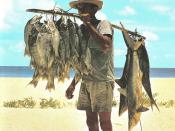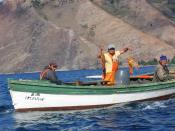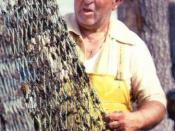An important characteristic of large industrialized societies like ours is the diversity of occupations. As often happens when people share a common goal and interact over time, many of the workers in our economic system have become members of occupational subcultures. These subcultures consist of specialized technologies, norms, sanctions, values, symbols, and language, all of which serve to promote activity toward common goals, integrate the group, and protect the interests of group members.
One celebrated example is the subculture of factory workers that was accidentally discovered by Elton Mayo and his associates in the 1930s. The research team visited the Hawthorne plant of the Western Electric Company to study the effects on productivity of variations in lighting. What the researchers found was that lighting had little to do with worker output. Instead, work group norms were found to be the strongest forces affecting the daily production levels of the subjects of the research.
The workers used a specialized language, and applied powerful sanctions against proscribed behavior as important social control mechanisms.
A great deal of the research on factory workers emanated from a concern for increased industrial productivity. Since the 1940s, however, sociologists have gone beyond the factory setting to conduct inquiries into other occupational groups. Lately, much research has been done on fishermen, for several reasons. First, there are certain features about fishermen and their communities that differentiate them from others and are of scientific interest. Second, the Fisheries Conservation and Management Act of 1976 stipulates that the effect of new federal policies on how American fishermen make a living must be studied in advance. Third, newly developing state laws in coastal areas will also have great impact on fishermen, and research is required for local as well as federal management purposes.
Research completed thus far shows the typical fisherman to be a person with more than one occupation (a situation called occupational pluralism)(Maiolo and Bort, 1980). In addition to accommodating seasonal changes in fisheries (for example, switching from shrimping in the summer to finfishing in the fall), many fishermen hold hourly paying jobs during the off-season. Some work as carpenters and build houses as well as boats, others make and sell nets, others work as lumberjacks, and so on.
Because of the risks involved, fishermen have developed an elaborate set of behaviors that function to minimize the probability of accidental injury or death. Because weather conditions affect success in fishing, they have also developed folk practices to predict weather--some fairly accurate, others not.
Elaborate sets of informal norms develop to differentiate territorality within the fishing grounds. For example, "laying on a set" means that a shrimp fisherman is leaving his boat and gear in the place where he will fish that night, and no one else can fish there (though others may get in line and await their turn to fish that spot). If these norms are violated, the interloper's gear will be destroyed, and law enforcement officers will not usually intervene.
A specialized language also exists to facilitate communication within the group and hinder communication with outsiders. Thus, in North Carolina, one hears of a coming mullet blow, which signals the fishermen to prepare to switch activities; or one hears that the fish have lockjaw, meaning the charter captains are having difficulty getting fish on the hooks for their customers; or one hears that it's flat cam.
ReferencesMaiolo, J. and J. Bort, The Sociocultural Context of the North Carolina Shrimp Industry, Second Year Report, University of North Carolina Sea Grant, 1980.





